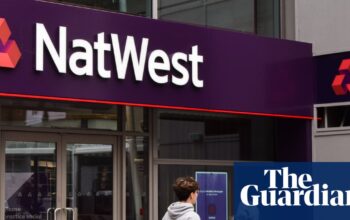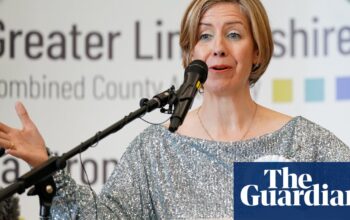
Latest results
Northumberland
2 hours ago
Greater Lincolnshire mayor
2 hours ago
Doncaster mayor
4 hours ago
West of England mayor
4 hours ago
North Tyneside mayor
6 hours ago
Labour have held on to three mayoralties, while Reform has won its fifth MP in the Runcorn and Helsby parliamentary byelection with a razor-thin victory. The majority of council results are expected later on today.
Parliamentary byelection
Elected mayors
Doncaster
| Party | Votes | % | |
|---|---|---|---|
|
Labour Ros Jones |
23,805 | 32.6 |
|
|
Reform Alexander Jones |
23,107 | 31.7 |
|
|
Conservative Nick Fletcher |
18,982 | 26 |
|
|
Green Julie Buckley |
2,449 | 3.4 |
|
|
Yorkshire Party Andrew Walmsley |
1,164 | 1.6 |
|
|
Social Democratic Party David Bettney |
929 | 1.3 |
|
|
Lib Dem Mihai Melenciuc |
895 | 1.2 |
|
|
British Democratic Party Frank Calladine |
448 | 0.6 |
|
|
Workers Party of Britain Ahsan Jamil |
434 | 0.6 |
|
|
Trade Unionist and Socialist Coalition Andy Hiles |
393 | 0.5 |
|
|
Independent Richie Vallance Richie Vallence |
245 | 0.3 |
|
|
No Description Doug Wright |
157 | 0.2 |
|
Greater Lincolnshire
| Party | Votes | % | |
|---|---|---|---|
|
Reform Andrea Jenkyns |
104,133 | 42 |
|
|
Conservative Rob Waltham |
64,585 | 26.1 |
|
|
Labour Jason Stockwood |
30,384 | 12.3 |
|
|
Independent Marianne Overton |
19,911 | 8 |
|
|
Green Sally Horscroft |
15,040 | 6.1 |
|
|
Lib Dem Trevor Young |
13,728 | 5.5 |
|
North Tyneside
| Party | Votes | % | |
|---|---|---|---|
|
Labour Karen Clark |
16,230 | 30.2 |
|
|
Reform John Falkenstein |
15,786 | 29.4 |
|
|
Conservative Liam Bones |
11,017 | 20.5 |
|
|
Green Chloe-Louise Reilly |
3,980 | 7.4 |
|
|
Lib Dem John Appleby |
3,453 | 6.4 |
|
|
Independent Cath Davis |
1,780 | 3.3 |
|
|
Independent Martin Uren |
1,460 | 2.7 |
|
West of England
| Party | Votes | % | |
|---|---|---|---|
|
Labour Helen Godwin |
51,197 | 25 |
|
|
Reform Arron Banks |
45,252 | 22.1 |
|
|
Green Mary Page |
41,094 | 20 |
|
|
Conservative Steve Smith |
34,092 | 16.6 |
|
|
Lib Dem Oli Henman |
28,711 | 14 |
|
|
Independent Ian Scott |
4,682 | 2.3 |
|
Councillor change
Council control change
| Seat metric | Seat count |
|---|---|
| Total | 0 |
| Gain | 0 |
| Loss | 0 |
| Hold | 0 |
| Seat metric | Seat count |
|---|---|
| Total | 0 |
| Gain | 0 |
| Loss | 0 |
| Hold | 0 |
| Seat metric | Seat count |
|---|---|
| Total | 0 |
| Gain | 0 |
| Loss | 0 |
| Hold | 0 |
| Seat metric | Seat count |
|---|---|
| Total | 0 |
| Gain | 0 |
| Loss | 0 |
| Hold | 0 |
| Seat metric | Seat count |
|---|---|
| Total | 0 |
| Gain | 0 |
| Loss | 0 |
| Hold | 0 |
| Seat metric | Seat count |
|---|---|
| Total | 1 |
| Gain | 0 |
| Loss | 0 |
| Hold | 1 |
How the election works
On 1 May many county councils in England are up for election. In areas with two tiers of local government, the county councils are the upper tier, with responsibility for big-budget areas such as education and social care. Some unitary authorities are also up for election.
In addition there are elections for mayors of combined authorities, including some new authorities, and two directly elected single-authority mayors.
Councils of interest
These are some of the councils that show the key trends in the elections. The charts show the percentage of seats held in each council, by party.
Northumberland
Where parties gained councillors
Regions in white are up for election. The size of the circle indicates the seats gained as a percentage of the number that were up for election.
Labour
Labour had relatively little at stake in Keir Starmer’s first major electoral test since becoming prime minister, as they were going into the election defending less than half the number of council seats up for election compared with the Conservatives.
Conservative
Many of these council areas have been deeply Conservative for years, so expectations of significant Conservative losses were high.
Lib Dem
The Lib Dems could make substantial gains if they can capitalise on anti-Conservative feeling in the centre-right, especially in areas such as Oxfordshire and Kent.
Green
These are not traditionally strong Green areas for the most part, but university cities such as Canterbury and Exeter will be voting as part of their respective counties.
Independents
Independent candidates made significant gains in 2024, largely at the expense of Labour, both in the local elections and general elections.
Reform
Reform were called the ‘wild card’ going into the election, with the party having high hopes in regions like Kent and Lincolnshire.
All council results
| Con | 26 |
|
-7 |
| Reform | 23 |
|
+23 |
| Lab | 8 |
|
-10 |
| Ind | 7 |
|
-3 |
| Lib Dem | 3 |
|
-1 |
| Green | 2 |
|
0 |
About these results
These results are provided by the Press Association media newswire (PA). Numbers for change in seats are calculated against the state of the council just before this election. Other organisations calculate using the previous election, and this can lead to discrepancies.
They may also announce individual ward councillor results as they become known, while PA release results for each council only when its full count is complete. PA collates results only for elections that were due in this electoral cycle, meaning there may be council byelection results in other parts of the country that are not included. There are frequent changes in ward boundaries, sometimes accompanied by changes in the number of councillors overall.
Source: theguardian.com



